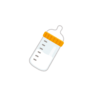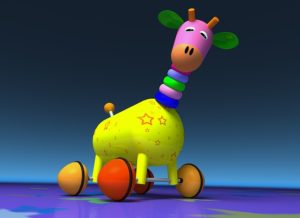
13 Aug When to Use Formula Milk
Mixed Feeding
Q: When feeding with both breast milk and formula milk, when and how much of each should I give to my baby?
A: Medically speaking, the need to use formula milk depends on whether the mother is able to produce enough milk. Formula milk is used when we see that the baby is not gaining enough weight and the mother is not producing enough milk even when breastmilk is given without any regulation in frequency or timing. Feeding without regulation means babies can feed whenever they want, and feeding is done in an adequate position and with proper latching.
At the same time, there may be cases when the mother needs or wishes to choose mixed feeding (using formula milk in addition to breastmilk) for various reasons.
If a mother only wishes to add the amount lacking in her breastmilk, specific support and medical advice will often be necessary to understand the more appropriate options.
Until babies are around 3 months old, they generally drink the entire milk bottle even when they are not hungry because of their sucking reflex when teats/nipples touch their palate. Even if you are producing enough breastmilk, your baby may switch to formula milk if you offer formula milk in addition to breast milk.
Even if you want to exclusively breastfeed your baby, during the first three months after birth the baby may not have enough and will be given an additional amount of formula milk by bottle. But if that additional amount exceeds what is needed, your baby may start sleeping longer or not be hungry for some time which increases feeding intervals and decreases the frequency of breastfeeding. If your baby doesn’t suck your nipple, breastmilk won’t be expelled and a signal will be sent to mammary cells in your breasts to decrease milk production.
It is difficult to distinguish whether your baby is getting the correct amount of additional formula milk and gaining weight or whether they are having too much milk which decreasing your milk production. Please consult a midwife specializing in breastfeeding or a pediatrician about your specific case.
Basically, you should follow your baby’s signs of hunger and directly feed your baby and if he/she seems to want more. Judge when it is appropriate to add formula milk by weighing your baby often.
Therefore, if you want the baby to drink as much breast milk as possible, first check whether the mother has no problems such as sore nipples or breasts, whether the baby is sucking, and whether the baby is sucking deeply and effectively. If there are no problems, but their weight gain is insufficient and the mother’s milk is not available, A mother will consult with a healthcare professional to decide together a proper amount of supplementation and see if weight gain is good with that amount of artificial milk.
To know whether your baby is drinking enough breast milk, check your baby’s wet diapers. Usually, if you find an almost transparent light-yellow urine more than 5 to 6 times a day and can feel some weight when holding it up, your baby should be getting enough milk.
If you are using a cloth diaper, more than 8 times a day is normal because you can feel the diaper become wet soon after your baby’s urination.
Signs of successful breastfeeding. (Suggested by UNICEF/WHO)
-
-
- Infants should be breastfed on demand – more than 8 to12 times, as the child wants.
- A baby has more than 6 wet diapers in 24 hours. Urine color is light yellow within 24 hours or later after the birth.
- A baby has 3 to 8 solid stool diapers in 24 hours. At the age of 4-6 weeks the frequency may decrease and the amount of stool increase.
- A baby has good muscle tone, healthy skin, and vitality.
- A baby gains weight constantly.
- A baby become taller and has a bigger head circumstance.
- A baby’s clothes are getting smaller.
-

Q: How should I select the formula milk for my baby?
A: In Japan, there is not a big difference between different formula milk products made from cow milk.
(You cannot use “Follow-up Milk” which is a completely different product for babies of early age.)
 Q: Is there a Halal milk in Japan?
Q: Is there a Halal milk in Japan?
A: I don’t think that any Japanese formula milk is Halal, because almost all their ingredients are the same. They are using taurine (derived from bovine bile).
Please refer to SEMI Sapporo web site for more information about Halal milk.
Consultations about supplements
Q: Do infants need vitamin D and iron supplements?
A: Hokkaido is located in a high latitude region and you cannot expect to create vitamin D in your skin except during midsummer. Until your child is able to eat fish and mushrooms easily, I recommend vitamin D supplements for your baby during autumn, winter, and spring.
Please refer to the article on the SEMI Sapporo website: “People can easily develop vitamin D deficiency.”
As for iron, usually if the baby was born full-term, enough iron for the baby’s first 6 months is passed on in the mother’s womb. Give your baby red meat and fish containing easy-to-absorb heme iron when they start eating solid food as complementary from about 6 months.
If your baby is fed mainly with formula milk, iron is added to the product and there is less worry about a lack of iron.
Even if you are breastfeeding, you don’t have to supplement with iron regularly. Also there is no relation between a mother’s anemia and iron deficiency in their baby.
When there is extreme difficulty in eating solid food and having none or only a small amount of formula milk, the risk of iron deficiency becomes higher.
If you are concerned, please consult about this issue at well-baby checkups and have your child examined. Pre-term babies and babies on a strict vegan or vegetarian diet are at a high risk of iron deficiency and anemia. These babies are advised to get examinations.
Reference:
![]() Safe preparation, storage, and handling of powdered infant formula Guidelines (FAO/WHO)
Safe preparation, storage, and handling of powdered infant formula Guidelines (FAO/WHO)
If you want to use sterilizing solution, please read the article “How to use this solution for sterilizing for baby bottles and nipples”.
Nobuko Kawamata M.D.


